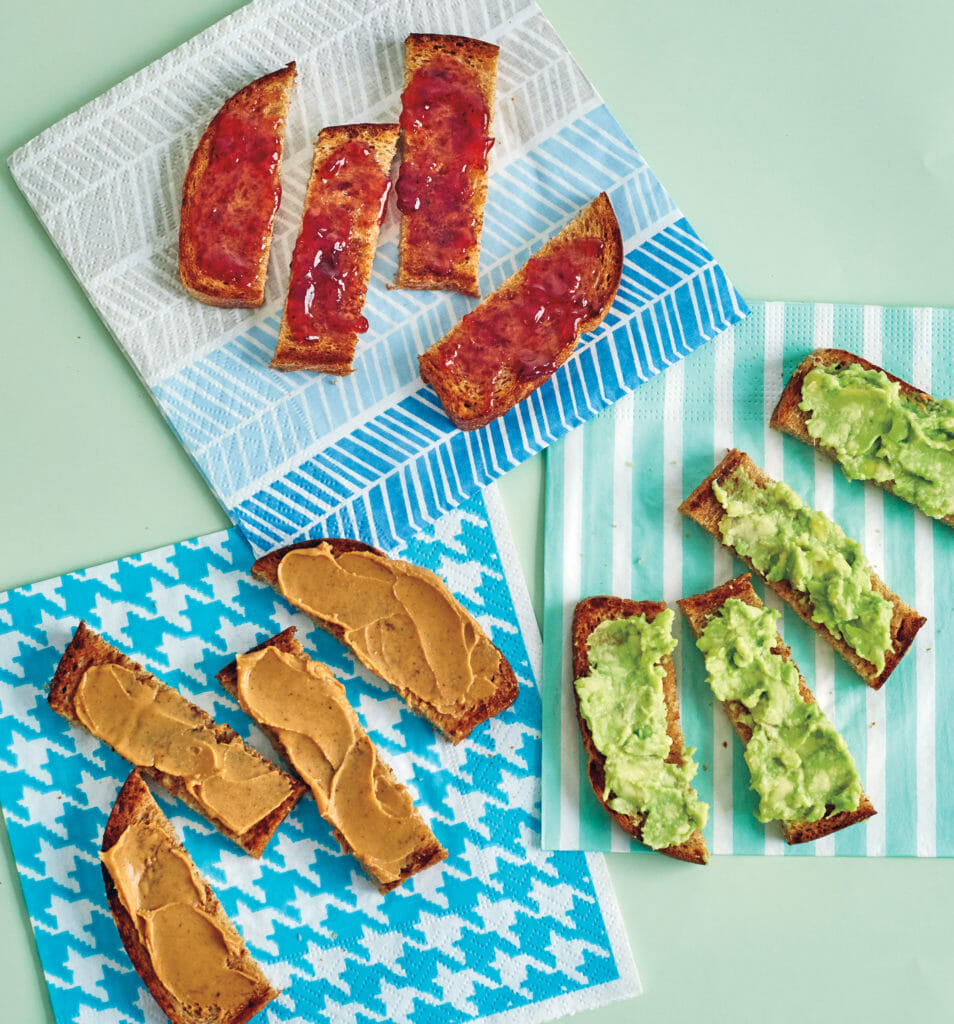When the time came for my kids to transition from breast milk to solids, I did what most parents did at the time: stocked the pantry with mashed peas and peaches, invested in a couple of tiny spoons, and bought a mini food processor to make my own purees. At times, supplying my babies with nutritionally-balanced food and patiently waiting for them to accept every spoonful felt like a part-time job. Looking back, I wish I’d known about baby-led feeding, an entirely different way to nourish infants espoused in a terrific new book by Parents Magazine food editor, Jenna Helwig.
What is Baby Led Feeding?
Baby-led feeding is an approach to transitioning children to solids that emphasizes finger foods that babies pick up and eat themselves, with pureed food filling in on occasion, if needed. Instead of responding to an infant’s hunger cues by opening a jar of baby food, for example, parents can serve them the same dinner they’re eating, only cut into graspable pieces.
How Does it Work?
Six months is generally recognized as an appropriate age to start solids, by which time most babies can sit properly, pick up food with their hands, and get it to their mouths. Parents present food in easy-to-grab pieces that are cooked tender enough to mash between fingers. At mealtime, parents set food within their baby’s reach, so they can touch, explore, and yes, eat. Finger foods can be supplemented with spoon-fed purees, either for convenience sake, to introduce a different texture, or as a supplement when fine motor skills might not keep pace with nutritional needs.
Wondering about baby-led feeding? Learn more about this fresh approach to nourishing babies. Share on XWhat about Choking?
When I initially learned about baby-led feeding, my first thought was, “won’t they choke?” I asked Jenna Helwig this question and she explained that the key is to be sure that the food offered is safe, “Each piece needs to be soft. Parents should be able to squish it with gentle pressure between their thumb and forefinger,” she said. “If parents are still nervous about choking, it is totally okay to start with purees for the first few weeks and then introduce finger foods concurrently. Just don’t give them two textures at the same time.”
What are the Benefits?
The upsides to baby-led feeding are many. First off, there’s the practical matter that it promotes one meal for all, taking the pressure off parents to buy or prepare baby food. Beyond that, here are a few other potential benefits:
- Helps integrate babies into the family table, since they are able to feed themselves the same food at the same time everyone else is eating.
- Supports early development of fine motor skills as babies learn to transfer food from plate to mouth.
- Helps babies identify their hunger and satiety cues early on. They don’t have someone else spooning food into their mouth and urging, “just one more bite” when they may well have had enough.
- May promote early acceptance of different flavors and textures, since babies aren’t limited to sweet purees. Down the road, this could translate to more adventurous eaters.
Where to Learn More
If you’re interested in baby-led feeding, pick up a copy of Jenna’s book. It includes detailed instructions for transitioning infants from breast milk or formula to solids, with dozens of appealing recipes as suitable for babies as the rest of the family. The book was written in partnership with pediatric dietitian Natalia Stasenko, so it also includes sound nutrition advice with details on what meals should look like at various ages and stages. You can learn more here or buy a copy of the book here.
Photos used with permission from Baby-Led Feeding (Houghton Mifflin Harcourt, 2018) by Jenna Helwig
